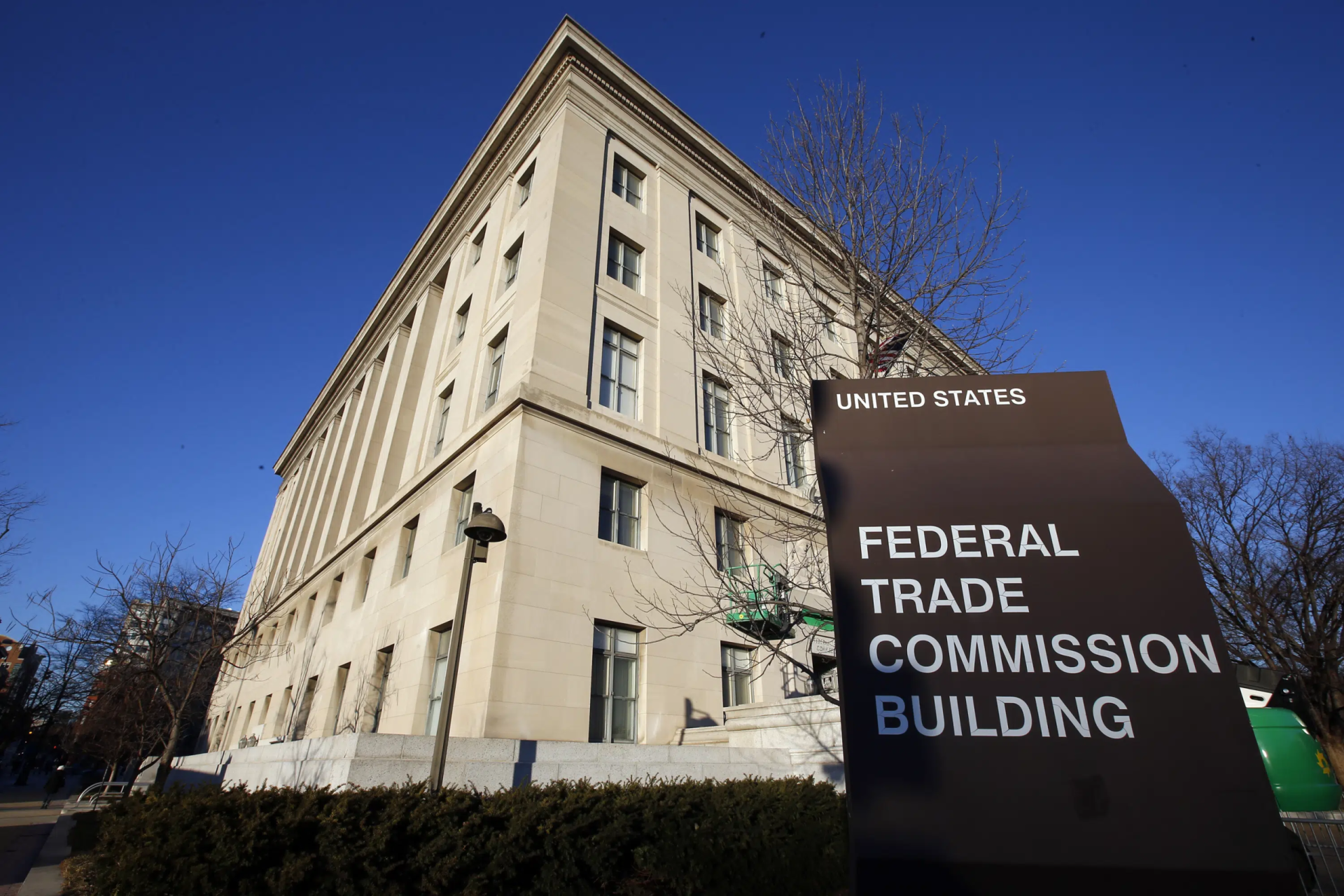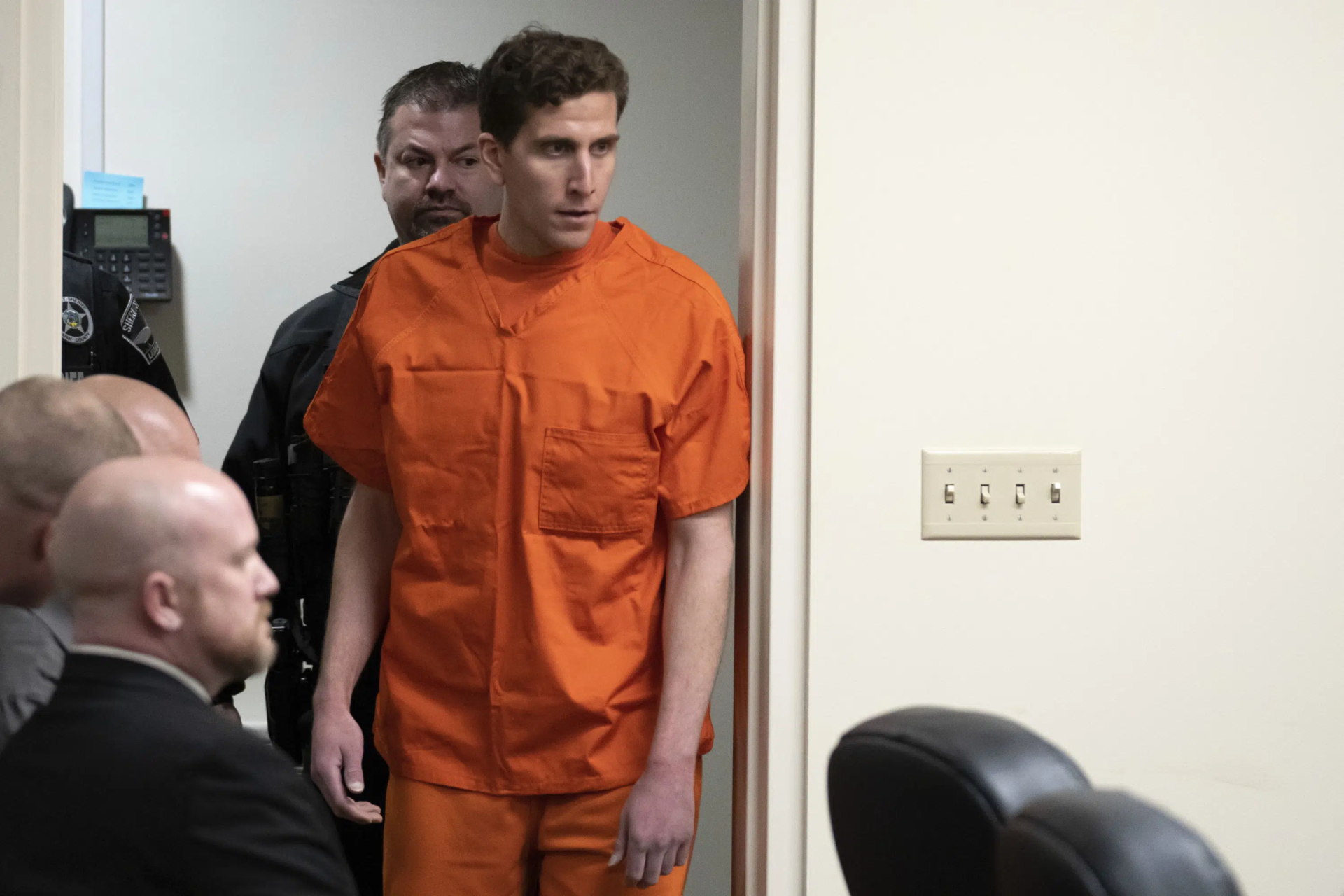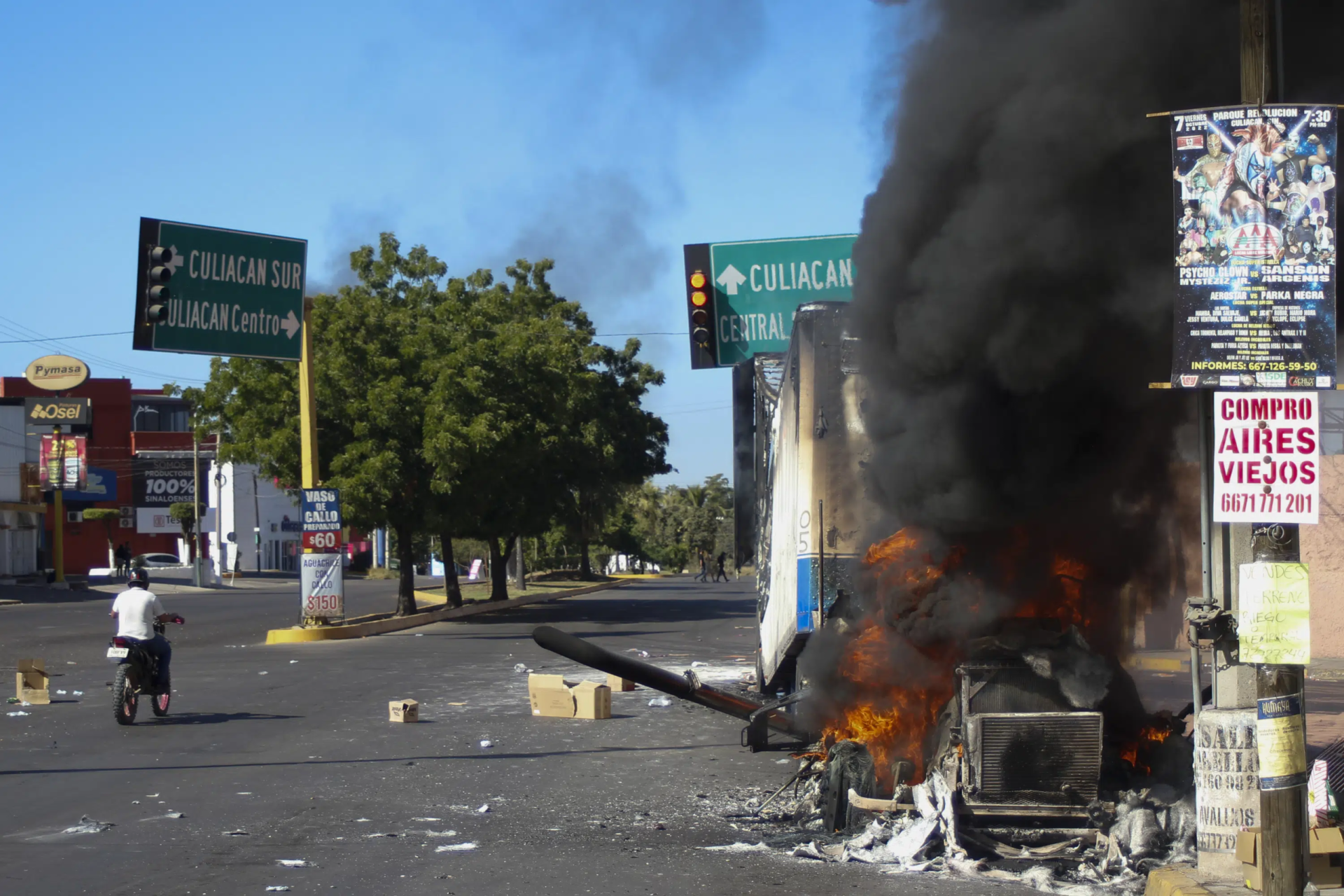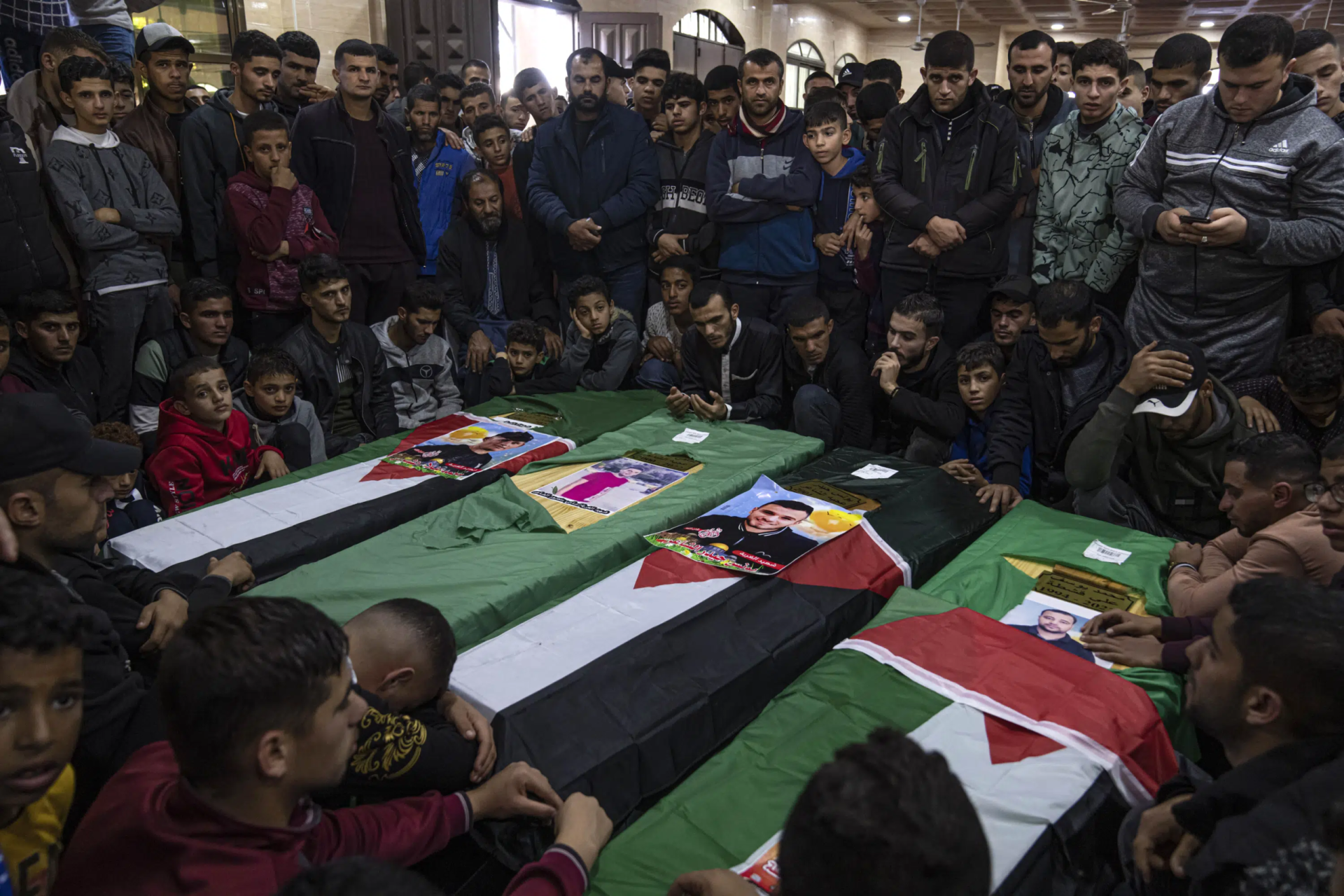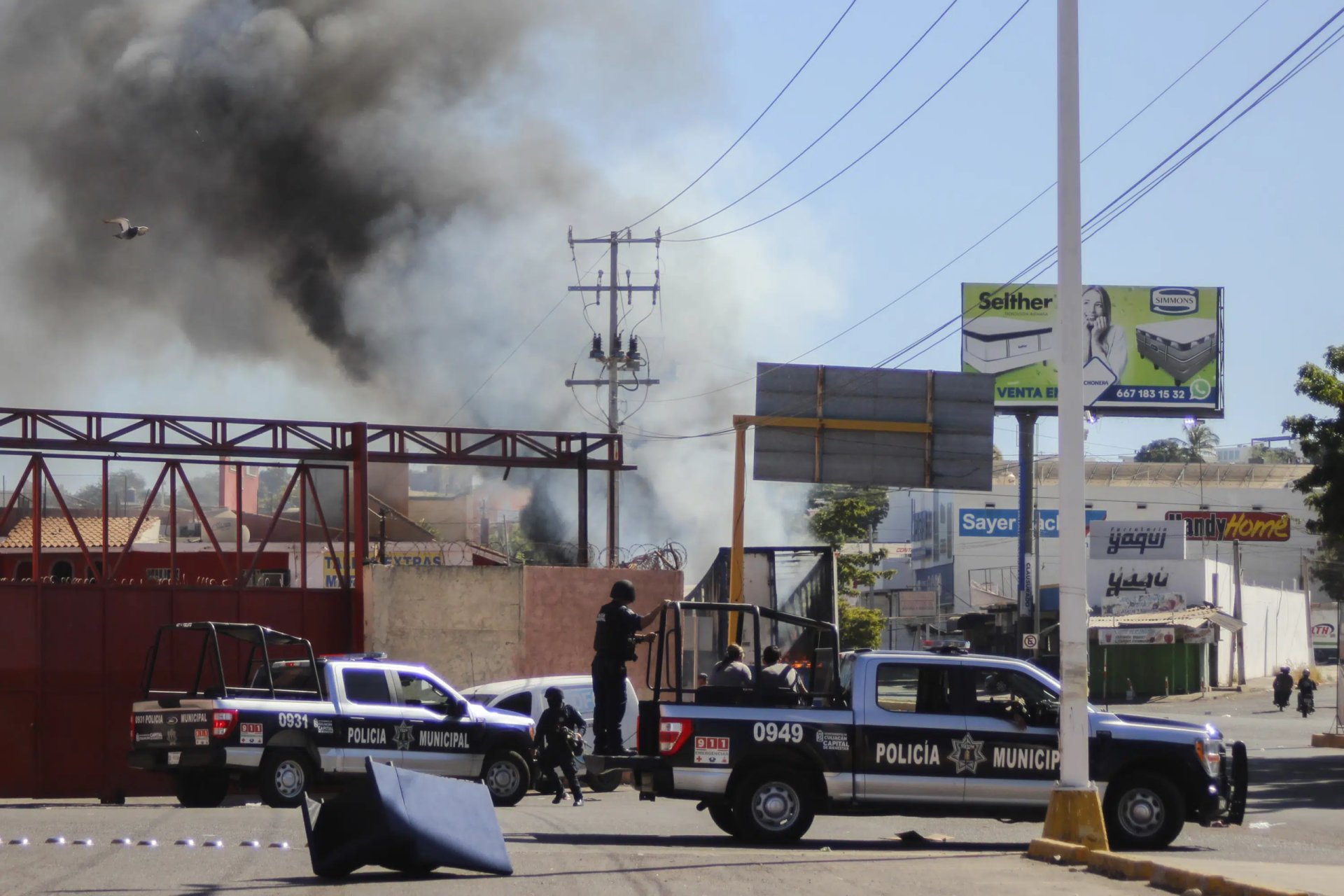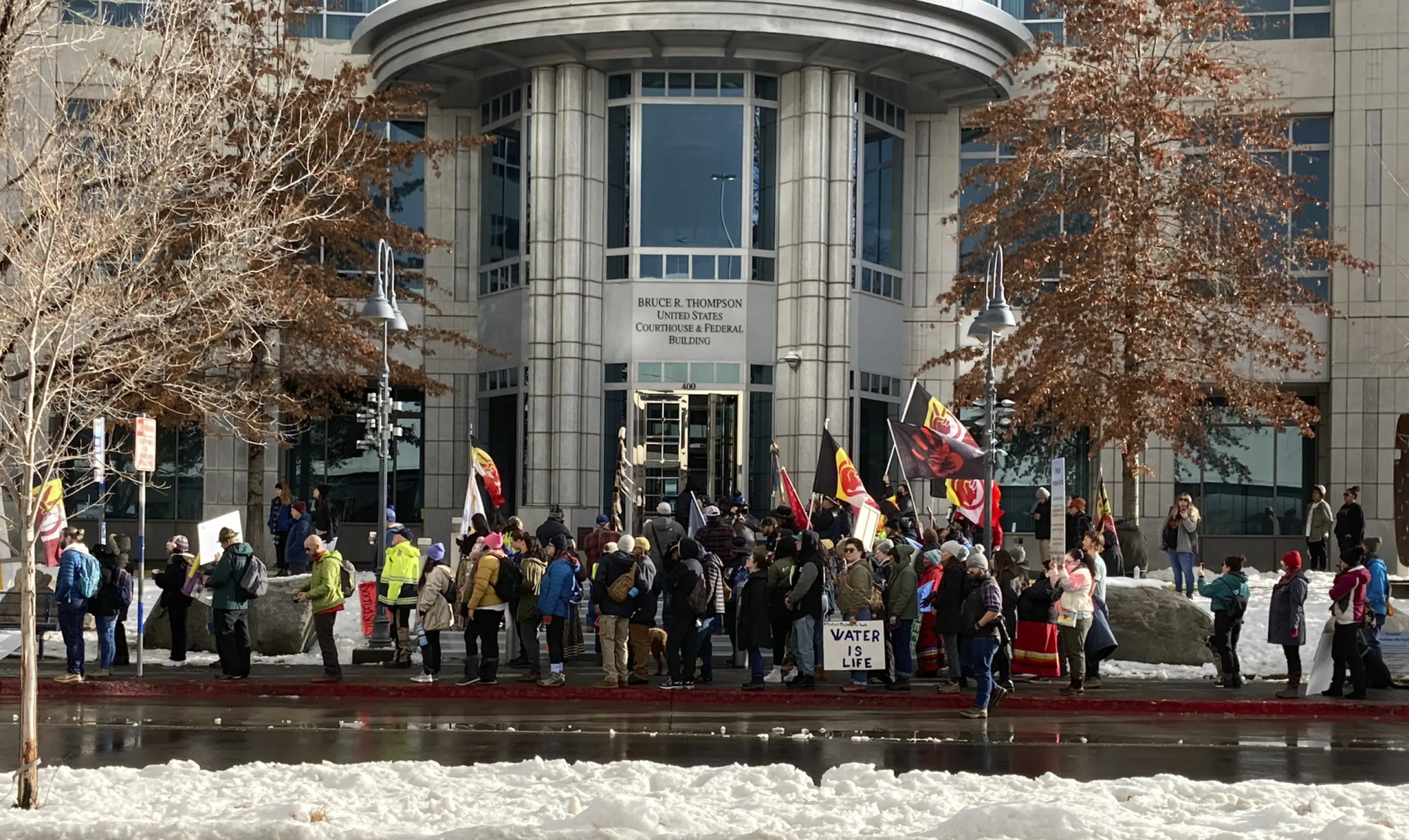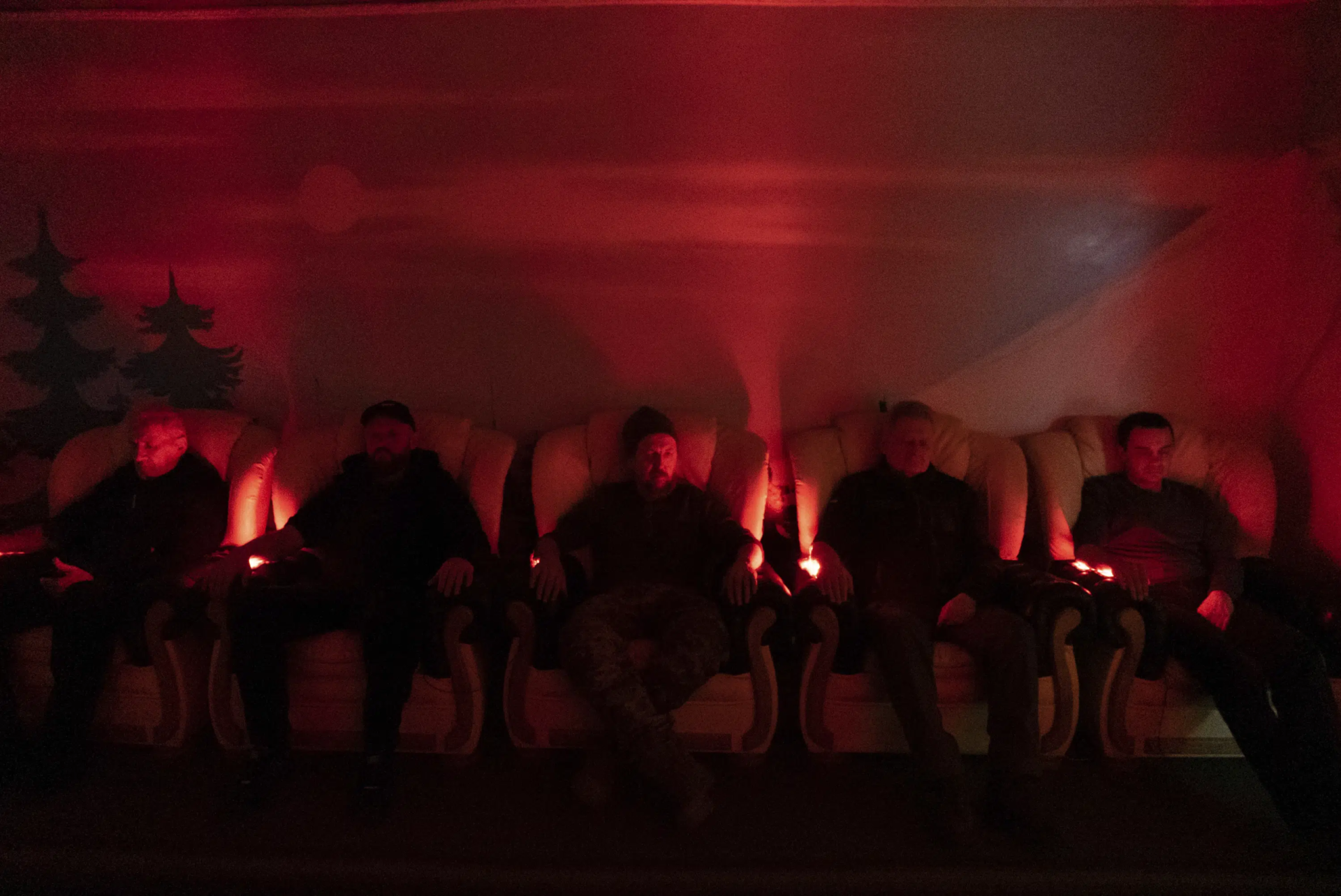MOSCOW, Idaho (AP) — Idaho police pieced together DNA evidence, cellphone data and surveillance video to charge a criminology graduate student with the November slaying of four University of Idaho undergraduates, according to an affidavit unsealed Thursday.
The affidavit says DNA matching that of 28-year-old Bryan Kohberger was found on a knife sheath recovered at the crime scene, just a short drive across the state border where he is a criminal justice doctoral student at Washington State University.
The affidavit also says that a cellphone belonging to Kohberger was near the victims’ home on a dozen occasions prior to the killings, and that while it was apparently turned off around the time of the early-morning attack, cell tower data place his phone in that region of Idaho shortly afterward.
Kohberger made his first appearance Thursday in an Idaho court, where he faces four charges of first-degree murder. He did not enter a plea, and was ordered held without bail.
The affidavit details a chilling encounter between one of the victims’ surviving roommates and a masked intruder the night of the stabbings in Moscow, Idaho. But many questions remain unanswered, including whether Kohberger and any of the victims knew each other, and why police weren’t alerted until nearly eight hours after the killings likely occurred.
Traces of DNA from a lone male later determined to be Kohberger were found on the button of a leather knife sheath found in the rental home where the victims were killed, according to the affidavit written by Brett Payne, a police corporal in Moscow. Investigators later closely matched the DNA on the sheath to DNA found in trash taken from Kohberger’s parents’ home in Pennsylvania, where he was arrested last week.
The sheath had a U.S. Marine Corps insignia on it, though there’s no record of Kohberger having served in the military.
The attack that occurred in the early morning hours of an off-campus home had spread fear throughout the university and surrounding area for weeks, as authorities seemed stumped by the brutal stabbings. Investigators made a breakthrough, however, after searching for a white sedan that was seen near the crime scene around the time of the killings.
Surveillance footage captured near the off-campus house showed that a white sedan — later identified as a Hyundai Elantra — drove by the home three times in the early morning hours of Nov. 13, returning a fourth time at about 4:04 a.m.
The car was next spotted on surveillance cameras leaving the victims home 16 minutes later “at a high rate of speed,” according to the affidavit. The same car was later spotted on a different camera headed toward Pullman, Washington, the town where Washington State University and Kohberger’s apartment are located.
The affidavit connects some of the dots between the surveillance footage and cellphone data. Kohberger’s phone pinged communications towers in the region at the same time and in the same areas that the white Elantra was seen driving in the hours after the killings, the affidavit says.
The cellphone data included another chilling detail, the affidavit said: It pinged a cell tower near the victims’ neighborhood hours after the attack, around 9 a.m.
Latah County prosecutors have said they believe Kohberger broke into the home with the intention of killing the victims: Kaylee Goncalves, 21; Madison Mogen, 21; Xana Kernodle, 20; and Ethan Chapin, 20. But investigators have made no public statements about a possible motive, or whether any weapons have been found.
Two other housemates were at home during the Nov. 13 killings, but were not physically harmed.
One of the uninjured housemates told investigators that she was awoken by noises at about 4 a.m., and thought she heard another housemate say something like, “there’s someone here.” She looked outside her bedroom and didn’t see anything. Later she thought she heard crying coming from Kernodle’s room and looked outside again. That’s when she said she heard a male voice say something to the effect of, “it’s OK, I’m going to help you,” according to the affidavit.
She later opened her door a third time and saw a masked man in black clothing whom she did not recognize walking toward her and stood in “frozen shock” as he walked past her toward a sliding glass door, the affidavit said. She went back in her room and locked the door.
Investigators believe the suspect then left the home. The document does not say what happened next at the home, or why police were not alerted for several more hours.
Mental health experts say common physiological responses to frightening or traumatic experiences include an urge to fight, an urge to flee, or an urge to freeze.
Location data from Kohberger’s cellphone showed he had traveled to the area of the victims’ residence at least a dozen times between late June and the night of the killings, authorities said.
Those apparent visits to the victims’ neighborhood all occurred late in the evening or in the early morning, the affidavit said. Investigators also obtained location data from the night of the killings, showing that Kohberger’s phone was near his home in Pullman until about 2:42 a.m.
Five minutes later, the phone started using cellular resources located southeast of the home — consistent with Kohberger traveling south, the affidavit said. There was no other location data available from the phone until 4:48 a.m. — from a cellphone tower south of Moscow — suggesting Kohberger may have turned his phone off during the attack, the affidavit said.
At that point, the phone began taking a roundabout route back to Pullman, traveling south to Genesee, Idaho, then west to Uniontown, Washington, and north to Pullman just before 5:30 a.m. — around the same time the white sedan showed up on surveillance cameras in town.
An FBI expert identified the vehicle as a 2011-2016 Hyundai Elantra; Kohberger was driving a 2015 white Elantra during traffic stops in August and in October, the affidavit said.
At the time, Kohberger’s vehicle had a Pennsylvania license plate and was registered in that state. That registration was set to expire on Nov. 30, however. On Nov. 18 — five days after the killings — Kohberger registered the car in the state of Washington, getting a new license plate.
Kohberger had applied to become an intern with the Pullman Police Department sometime in the fall of 2022, writing in his application essay that he wanted to help rural law enforcement agencies collect and analyze technical data in public safety operations, according to the affidavit. The document does not say if Kohberger was granted the internship.
The Pullman Police Department did not immediately respond to a message from The Associated Press asking if Kohberger ever became an intern with the department.
During Thursday’s court hearing, Kohberger appeared with his attorney in an orange jumpsuit and remained silent while the magistrate ordered him not to have contact with the victims’ families. His next hearing was set for Jan. 12.
Some of Goncalves’ family members attended the hearing.
“It’s obviously an emotional time for the family, seeing the defendant for the first time,” the Goncalves’ family attorney, Shanon Gray, said outside the courthouse. “This is the beginning of the criminal justice system and the family will be here for the long haul.”
Kohberger’s defense attorney, Anne Taylor, did not respond to a request for comment on Thursday. A magistrate judge has placed the attorneys and others involved in the case under a sweeping gag order barring them from talking publicly about the case.
___
This story was corrected to delete a reference to a knife being found at the crime scene and to clarify that the U.S. Marine Corps emblem was on the sheath that was found.
___
Boone reported from Boise, Idaho, and Johnson from Seattle. Associated Press writer Marc Levy in Harrisburg, Pennsylvania, contributed to this story.



